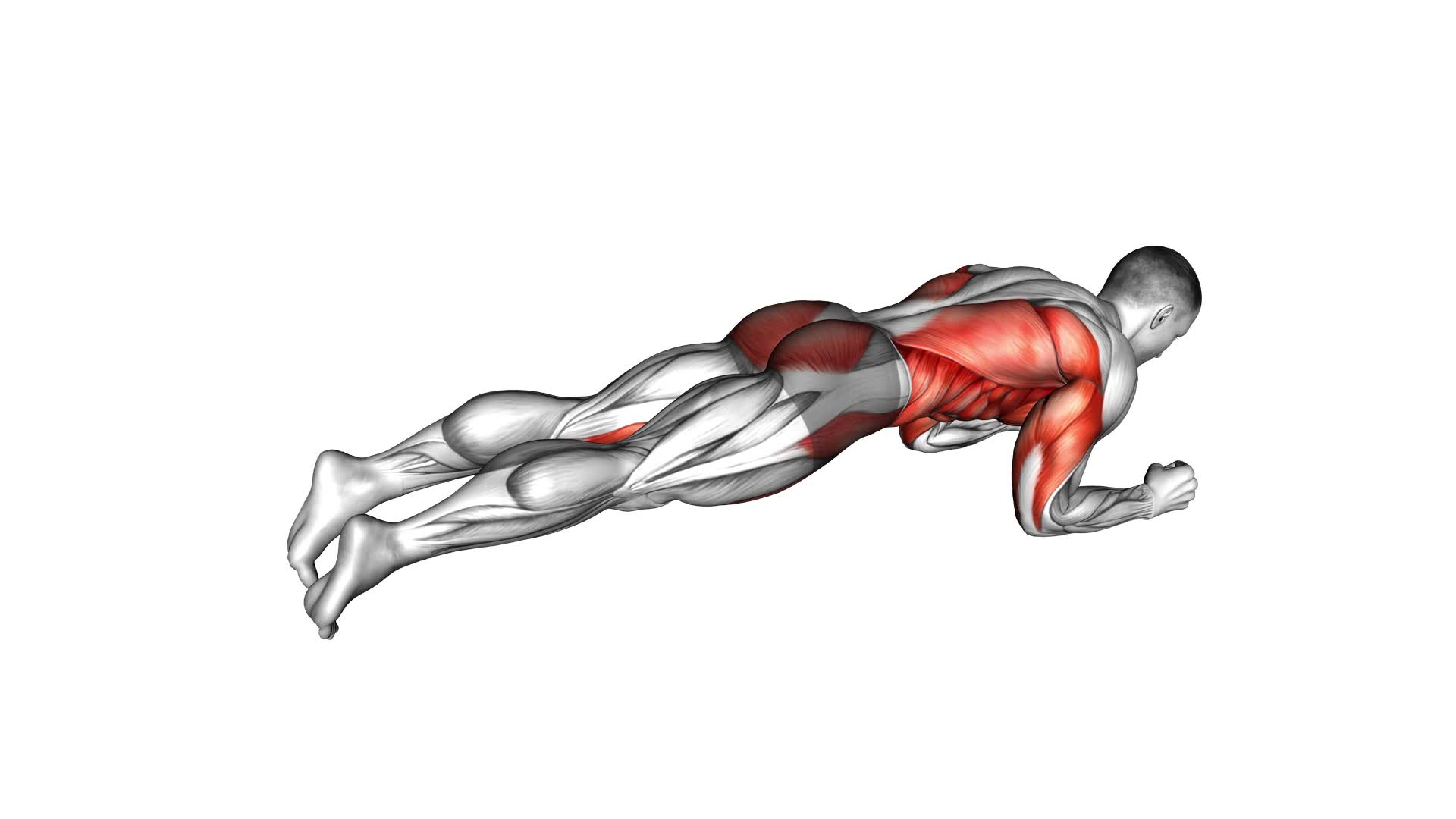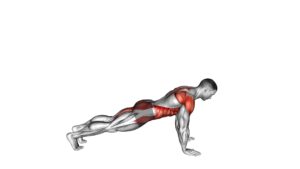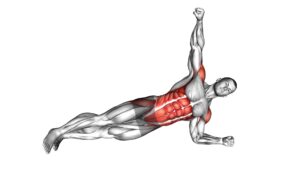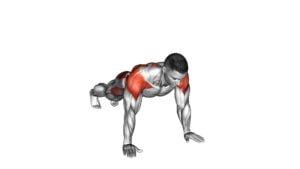Body Saw Plank – Video Exercise Guide & Tips

Looking to level up your core workout? Check out the Body Saw Plank! In this video exercise guide, we'll show you the benefits of this challenging move, proper form and technique, variations and modifications to suit your fitness level, and common mistakes to avoid.
Watch This Exercise Video
Plus, we've got tips for progression and challenge to keep you pushing your limits. Get ready to strengthen and stabilize your core like never before with the Body Saw Plank.
Let's get started!
Key Takeaways
- The Body Saw Plank exercise improves core strength, stability, balance, and overall body control.
- Proper form and technique include keeping the hands under the shoulders, engaging the core muscles, shifting weight using forearms, and maintaining a neutral spine.
- Variations and modifications of the Body Saw Plank exercise can target specific muscle groups, increase intensity, and challenge stability.
- Common mistakes to avoid during the exercise include sagging or arching the lower back, raising the hips too high, and forgetting to breathe.
Benefits of the Body Saw Plank
The body saw plank offers a variety of benefits for your core strength and stability. By incorporating this exercise into your routine, you can effectively improve your core strength, increase stability, and enhance balance.
The body saw plank primarily targets the core muscles, including the rectus abdominis, transverse abdominis, and obliques. These muscles work together to provide stability and support to your spine. As you perform the body saw plank, the constant motion engages these muscles, forcing them to work harder to maintain balance and control. This continuous movement challenges your core strength, helping to strengthen and tone these muscles over time.
In addition to improving core strength, the body saw plank also enhances stability and balance. By constantly shifting your weight forward and backward, you're constantly challenging your body's ability to maintain stability. This movement forces your core muscles to activate and work to stabilize your body, improving your balance and overall stability.
Incorporating the body saw plank into your exercise routine can have a significant impact on your core strength, stability, and balance. By consistently performing this exercise, you can gradually build strength and improve your overall fitness level.
Proper Form and Technique
To perform the body saw plank with proper form and technique, start by positioning yourself in a high plank position. This exercise isn't only a great way to strengthen your core, but it also provides numerous benefits for stability training.
Here are some important tips to ensure you're performing the body saw plank correctly:
- Keep your hands directly under your shoulders and your body in a straight line from head to toe.
- Engage your core muscles by pulling your belly button towards your spine.
- Slowly shift your weight forward and backward, using your forearms to slide your body back and forth.
- Avoid sagging or arching your back during the movement, as this can put unnecessary strain on your lower back.
- Focus on maintaining control and stability throughout the exercise.
- Breathe deeply and exhale as you slide your body back.
- Start with shorter movements and gradually increase the range of motion as you become more comfortable and stronger.
Variations and Modifications
To add variety and challenge to your body saw plank routine, try incorporating different variations and modifications. By making small adjustments to your body positioning or adding in equipment, you can target specific muscle groups and increase the intensity of the exercise.
One variation you can try is the single-leg body saw plank. Instead of keeping both feet on the ground, lift one leg off the floor and hold the plank position with just one leg supporting your body weight. This variation engages your core muscles even more as you work to maintain balance and stability.
Another modification you can make is to use a stability ball. Place your forearms on the ball instead of the ground and perform the body saw plank. The instability of the ball challenges your core muscles and adds an extra element of difficulty to the exercise.
If you're looking to increase the intensity of the body saw plank, you can try adding a push-up at the end of each repetition. After you perform the saw motion, push your body back into a high plank position and complete a full push-up before returning to the starting position.
Incorporating these variations and modifications into your body saw plank routine won't only keep your workouts interesting but also help you progress and achieve your fitness goals. Remember to always listen to your body and adjust the exercises to your own fitness level.
Common Mistakes to Avoid
Avoid these common mistakes when performing the body saw plank:
- Letting your lower back sag: It's crucial to maintain a straight line from your head to your heels throughout the exercise. Sagging your lower back not only reduces the effectiveness of the plank but also puts unnecessary strain on your spine.
- Raising your hips too high: While it's important to engage your core, avoid lifting your hips too high, as it shifts the focus away from the abdominal muscles and onto the lower back. Keep your body in a straight line for optimal results.
- Forgetting to breathe: Proper breathing is vital during any exercise, including the body saw plank. Inhale deeply through your nose and exhale through your mouth. This helps to oxygenate your muscles and maintain stability throughout the movement.
To perform the body saw plank correctly, start in a plank position with your forearms on the ground and your body in a straight line. Engage your core and slowly rock your body forward and backward, using your forearms as the pivot point.
Remember to avoid the common mistakes mentioned above to ensure proper form and maximize the benefits of this challenging exercise.
Tips for Progression and Challenge
To progress and challenge yourself during the body saw plank, try incorporating additional variations and increasing the duration or intensity of the exercise.
Here are some progression tips and advanced challenges to help you take your body saw plank to the next level.
Firstly, you can experiment with different hand positions to add variety and difficulty. For instance, you can try performing the body saw plank with your hands elevated on a small step or a stability ball. This will increase the instability and engage your core even more.
Another way to progress is by extending the duration of the exercise. Start by aiming for 30 seconds and gradually work your way up to a minute or longer. This will build endurance and strengthen your core muscles over time.
If you're looking for a more advanced challenge, you can try adding a knee tuck or a leg raise while performing the body saw plank. This will further engage your lower abs and hip flexors, making the exercise more challenging.
Lastly, you can increase the intensity by wearing a weighted vest or placing a weight plate on your back. This additional resistance will increase the load on your muscles, helping you build strength and endurance.
Remember to always listen to your body and progress at a pace that feels comfortable for you. With these progression tips and advanced challenges, you can continue to challenge yourself and make progress with the body saw plank exercise.
Frequently Asked Questions
Can the Body Saw Plank Exercise Be Performed by Beginners?
Yes, beginners can perform the body saw plank exercise. It's a challenging core exercise that helps build strength and stability.
To make it easier, you can modify the exercise by performing it on your knees instead of your toes. This reduces the intensity while still targeting your core muscles.
Alternatively, there are other core exercises you can try, such as planks, Russian twists, or bicycle crunches, to build strength before attempting the body saw plank.
How Many Repetitions and Sets Should I Do When Performing the Body Saw Plank Exercise?
When performing the body saw plank exercise, it's important to follow repetition and set guidelines to get the most out of your workout.
To start, aim for 2-3 sets of 8-12 repetitions.
As you become more comfortable and stronger, you can increase the number of sets or reps.
Remember, there are also variations and progressions you can incorporate to challenge yourself further.
Keep pushing yourself and gradually increase the intensity for optimal results.
Is It Necessary to Use Equipment, Such as a Stability Ball, to Perform the Body Saw Plank Exercise?
No, it isn't necessary to use equipment like a stability ball to perform the body saw plank exercise.
However, using a stability ball can have several benefits. It can increase the instability of the exercise, which activates more muscles and challenges your core strength.
Additionally, using a stability ball can provide variations to the body saw plank exercise, allowing you to target different muscle groups and add variety to your workout routine.
Can the Body Saw Plank Exercise Help to Improve Core Strength and Stability?
The body saw plank exercise is an effective way to improve core strength and stability. By incorporating this exercise into your daily workout routine, you can reap numerous benefits.
It targets your abdominal muscles, lower back, and shoulders, helping to build a strong and stable core. Additionally, there are modifications and variations available to suit different fitness levels.
Are There Any Specific Breathing Techniques That Should Be Used During the Body Saw Plank Exercise?
During the body saw plank exercise, it's important to focus on your breathing techniques. Proper breathing can enhance the benefits of this exercise and improve your core strength and stability.
Conclusion
In conclusion, the body saw plank is an effective exercise that offers numerous benefits for strengthening the core and improving stability. By maintaining proper form and technique, you can maximize the results and minimize the risk of injury.
Additionally, incorporating variations and modifications can help tailor the exercise to your fitness level and goals. Avoiding common mistakes and gradually progressing in difficulty will ensure continuous progress and challenge.
Incorporate the body saw plank into your routine for a stronger and more stable core.

Author
Years ago, the spark of my life’s passion ignited in my mind the moment I stepped into the local gym for the first time. The inaugural bead of perspiration, the initial endeavor, the very first surge of endorphins, and a sense of pride that washed over me post-workout marked the beginning of my deep-seated interest in strength sports, fitness, and sports nutrition. This very curiosity blossomed rapidly into a profound fascination, propelling me to earn a Master’s degree in Physical Education from the Academy of Physical Education in Krakow, followed by a Sports Manager diploma from the Jagiellonian University. My journey of growth led me to gain more specialized qualifications, such as being a certified personal trainer with a focus on sports dietetics, a lifeguard, and an instructor for wellness and corrective gymnastics. Theoretical knowledge paired seamlessly with practical experience, reinforcing my belief that the transformation of individuals under my guidance was also a reflection of my personal growth. This belief holds true even today. Each day, I strive to push the boundaries and explore new realms. These realms gently elevate me to greater heights. The unique combination of passion for my field and the continuous quest for growth fuels my drive to break new ground.







